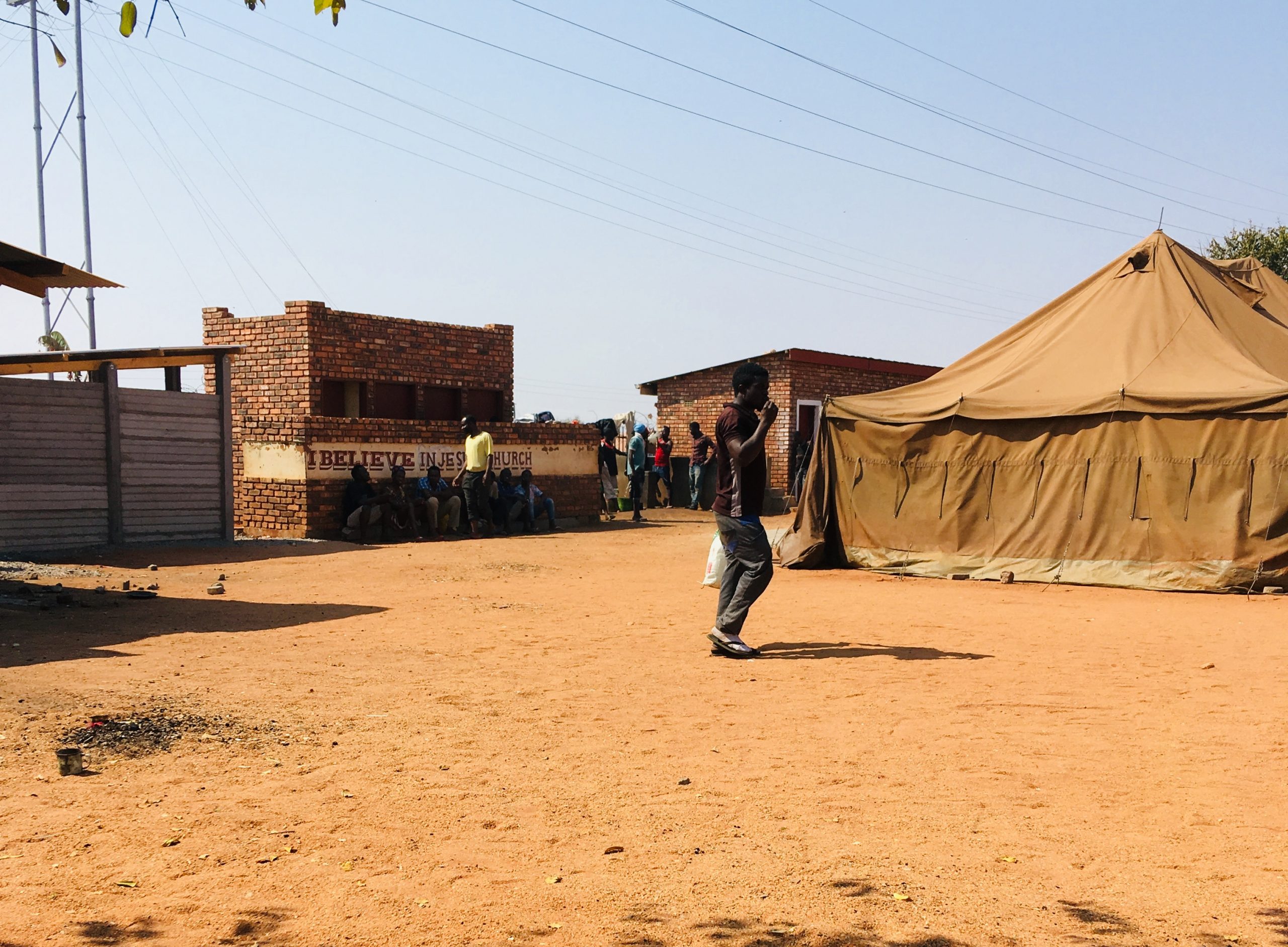
Read more
Blog, Mobility Practices and Processes
How does foreign aid affect the emigration of medical workers from developing countries?
Severe shortages of health personnel provide a justification for the international community to support developing countries in their efforts to retain medical workers through improved local conditions. Our new research shows that aid for...
During the festive season in 2020, migrants amassed in their thousands at border posts between South Africa and its neighbours due to a lack of coordination between governments and failure to implement strategies that Southern African Development Community (SADC) member states had agreed on. A Zimbabwean citizen died after collapsing near the Beitbridge border in Limpopo after she complained of fatigue and feeling dizzy while waiting in a bus. Altogether, at least 15 reportedly died in delays at the Zimbabwe-South Africa border.
This led some to argue that high-level talks and use of SADC guidelines on the pandemic should have been used to prevent a crisis. However, there is nothing new about this neglect. What we are seeing, rather, is the proliferation of immobility as a component of dispersed governance at the Zimbabwe-South Africa border. This governance applies to Zimbabwean migrants whose immobility is characterised by challenges that make it undesirable to return to Zimbabwe and difficult to move forward in South Africa, or invest in any kind of future elsewhere. Their desire to move confronts, and in turn, reshapes state regulation of people, processes and place.
Bureaucratising crisis and immobilities at the border
Humanitarian crisis and immobilities have become somewhat bureaucratised at the Zimbabwe-South Africa border since 2008. In northern South Africa around 15km from the border with Zimbabwe, Musina was an obscure town but the media cast it into the public eye in the wake of the 2008 Zimbabwean economic crisis due to its location at the border crossing. The nadir of the Zimbabwean economic and political situation led to a humanitarian influx to Musina by thousands of desperate Zimbabweans.
In 2008, Musina Mayor Caroline Mahasela admitted that the steady flow of people into the town was putting pressure on the municipality’s resources. Zimbabwean migration also tested South Africa’s legal and institutional infrastructure for migration management and refugee protection. Many Zimbabwean migrants began bathing and staying in the surrounding bush area of the Musina Showground ‘camp’ because they did not have anywhere else to go.
In March of 2009, South Africa authorities forcibly expelled thousands of Zimbabweans from Musina Showground as the Department of Home Affairs ordered them to close and disassembled all semi-permanent structures. Thousands of Zimbabweans began to flee from Musina to Johannesburg, with the majority headed to the Central Methodist Church with the help of humanitarian organisations. Others remained in Musina or would simply return upon deportation with even more pressing or basic needs that the state was unable to fulfil in the ‘revolving door’ of the deportation system.
Coupled with the lack of government assistance, all these developments prompted a humanitarian response by a number of international organisations offering services in Musina. The United Nations High Commissioner for Refugees (UNHCR) opened a field office in 2008. With the help of the UNHCR and International Organisation for Migration (IOM), faith-based organisations established ‘transit shelters’ to accommodate children, men and women ‘stuck’ in Musina. This created a bureaucratic regime for managing migrants according to these categories.
Involuntary immobility as migration governance
This humanitarian response has succeeded in organising Zimbabwean migrants into a political-economy of involuntary immobility that gives a minimalist value and meaning to their lives. The men’s’ shelter in Musina is one such space that is part and parcel of this governance regime.
This shelter for men aged over 18 managed by the church pastor who participates in the humanitarian cluster and relies on donations has a capacity of 350 people, but, each night, its population generally exceeds that as stranded Zimbabwean migrants plus asylum seekers from the Democratic Republic of Congo (DRC) and Burundi arrive on an ad hoc basis. This leads to crowded and unsanitary conditions.
Camp residents receive no meal so they have to fend for themselves. The UNHCR and IOM do not concern themselves with providing water at the shelter. In doing so, they ignore how water and other forms of basic relief they rarely provide are inseparable from life. Water holds a key to a life free from the risk of contracting deadly communicable diseases such as Cholera, Typhoid and COVID-19. The tap has not yet been switched off, but the men are conscious of the need to use water sparingly.
The transit shelters were initially set up to hold irregular Zimbabwean migrants for no more than 72 hours (later extended to two weeks) and offer them protection as they waited for their asylum papers. However, the shelters have relaxed these rules because of changes at the refugee reception offices that restricted applications to certain days based on nationality. Unlike Burundian and Congolese asylum seekers who are perceived as more likely to be ‘genuine’ asylum applicants, Zimbabwean migrants do not receive state or UNHCR refugee protection owing to the perception writ large that they are ‘economic migrants’.
Hence, instead of facilitating transit after receiving asylum documentation, transit shelters are now a space where Zimbabwean migrants stay indefinitely while trying to raise enough money for transport to travel further south. This is often after paying local ‘border jumping’ brokers known as impisi or being robbed along the border crossing by notorious local thieves known as omaguma guma.
These migrants cannot be arrested so long as they are within the yard of the shelter, due to an informal agreement between the local humanitarian cluster with local enforcers and the Musina municipality. However, staying in a context where they do not receive any meals or transport subsidies to facilitate transit places Zimbabwean migrants at the men’s’ shelter in an ambivalent position in which they must risk arrest and deportation by looking for work outside the shelter.
Taking matters into their own hands
For migrants who are confined to such spaces, waiting also defines their experience in strategic ways as they also turn their immobility into a resource for action. They recalibrate their migration plans and extract capital they would otherwise not have had in Zimbabwe. Some assume considerable influence over labour hiring processes as they develop enduring relationships with recruiters, contractors and employers. Others work out possibilities by strategically managing their time, energy, resources, and expectations to improve their chances of a successful migration.
It can be difficult to reconcile the agency and subordination their immobilities signify. Nonetheless, the very actors that Zimbabwean migrants trust with ‘saving’ them from the violence of the Zimbabwe-South Africa border have, wittingly or otherwise, bureaucratised a regime of governing migration and humanitarian crisis that functions through their immobilities. These forms of governed immobility are a microcosm of wider experiences of migrants waiting at borders, as political boundaries become increasingly contested spaces where strategies of defining and distancing ‘the other’ and ‘making the nation’ become highly visible.
This article draws on ethnographic field research conducted by the author in Musina, the geographic centre of humanitarian aid and services at the Zimbabwe-South Africa border. The research explores Zimbabwean migrants’ subjective experiences, relations and interactions with the border through a temporal framework of waiting.
Kudakwashe Vanyoro, Postdoctoral Research Fellow, African Centre for Migration & Society, University of the Witwatersrand, Johannesburg, South Africa
The EUI, RSCAS and MPC are not responsible for the opinion expressed by the author(s). Furthermore, the views expressed in this publication cannot in any circumstances be regarded as the official position of the European Union.

